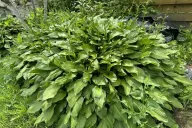The lush growth of celandine in a garden plot is a very alarming signal.
We'll tell you what thickets of celandine in your dacha indicate.
What does the lush growth of celandine indicate?
Lushly growing celandine is a sure sign of problems with the soil.
Namely, increased acidity. It is also necessary to pay attention to what crops grow next to celandine.
If the celandine's neighbors are nettle, quinoa and clover, the soil is slightly acidic.

If couch grass, chickweed and mint grow next to celandine, the soil is highly acidic.
You can reduce soil acidity by adding dolomite flour.
In the future, it is recommended to apply this product to the soil every three years.
And overgrown celandine can be used as a pest control agent.
Celandine infusion is effective against aphids, whiteflies, cruciferous flea beetles, and wireworms.
You can't add celandine to compost, the fertilizer will become acidic. And if celandine grows near a compost heap, acidification has probably already occurred.
It is recommended to use wood ash to deoxidize compost.








